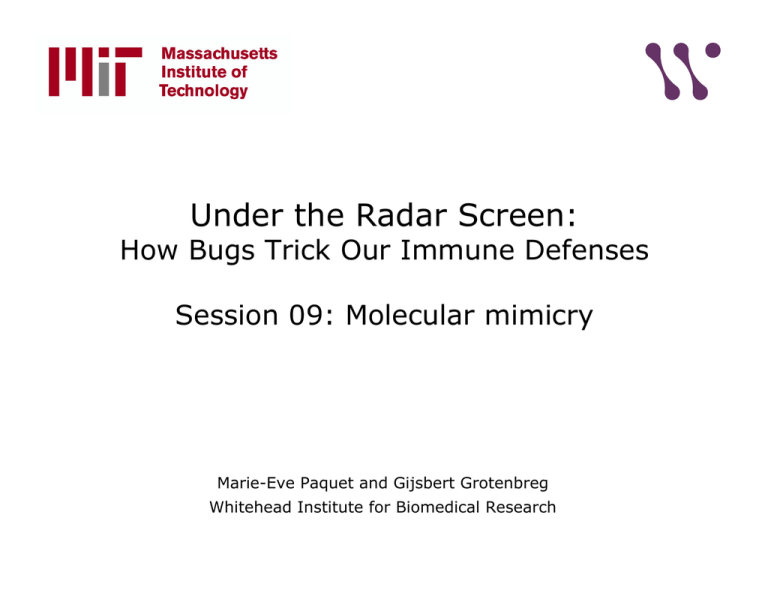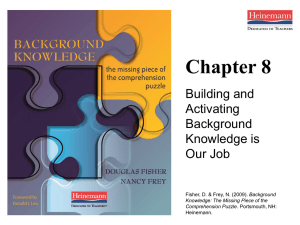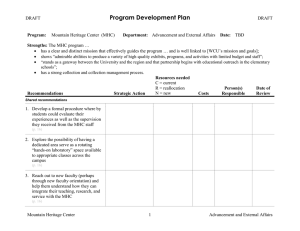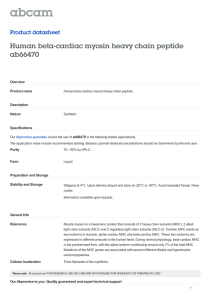Under the Radar Screen: How Bugs Trick Our Immune Defenses
advertisement

Under the Radar Screen: How Bugs Trick Our Immune Defenses Session 09: Molecular mimicry Marie-Eve Paquet and Gijsbert Grotenbreg Whitehead Institute for Biomedical Research The ‘missing-self’ hypothesis and Natural Killer Cells According to the ‘missing-self ’ hypothesis, one function of NK cells is to recognize and eliminate cells that fail to express ‘self ’ MHC class I molecules. The ‘missing-self hypothesis’ postulates that NK cells are activated to kill target cells, including tumor and virus-infected cells, when the NK cell encounters a host cell that lacks ‘self ’ class I MHC. A contemporary view of the ‘missing-self hypothesis’ postulates that NK cell responses are regulated by the integration of signals from both their activating and inhibitory receptors This weeks papers are at the crossroads of these two views !! Adapted from Lodoen et al. Nat. Rev. Microbiol. 2005 9(10):59-69 Recap: Possible activating signals for NK cells Given their strong cytolytic activity and the potential for auto-reactivity, NK cell activity is tightly regulated. Natural Killer cells must receive an activating signal which can come in a variety of forms Activating and inhibitory receptors NK cells express a variety of receptors which serve to either activate or suppress cytolytic activity. These bind to various ligands on target cells, both endogenous and exogenous, and have an important role in regulating the NK-cell response. Cytokines The cytokines IFNα/β plays a crucial role in NK-cell activation. As “stressmolecules” they are released by cells upon viral infection and serve to signal to the NK-cell the presence of viral pathogens. The ubiquitous activator IL-2 as well as IFNy have been demonstrated to also have the capability of activating NKcells. IL-12 is an important activator of NK-cells as it is a major cytokine produced by macrophages; a potent stimulator of the NK response FcR receptors NK-cells, along with macrophages and several other cell types, express the FcR molecule, an activating receptor which binds the Fc portion of antibodies. This allows NK cells to target cells against which a humoral response has been mobilized and lyse cells through ADCC. Paper 1 The class I MHC homologue of human cytomegalovirus inhibits attack by natural killer cells Nature, 386, pp514–517, (1997) Reyburn HT, Mandelboim O, ValesGomez M, Davis DM, Pazmany L, Strominger JL Question that the authors asked themselves: HCMV reduces surface MHC to prevent antigen presentation. However, these cells are not attacked by NK cells How is that possible ? …. is the UL18 gene product involved ? Questions • For Figure 1; is the use of anti-β2m for FACS staining a good choice or do you a have better suggestion ? • For Figure 2; how is the surface-labeling with biotin accomplished (try googling this) and where does the specificity of the assay come from ? Can you suggest better proof ? • Why do NK cells indiscriminately kill the 721.221-cells ? • What is the function of using glucosidase-inhibitors. • Figure 5 shows that CD 94 is required for NK inhibition signaling by UL18, but does it show that it is sufficient ? Paper 2 A Novel Immunoglobulin Superfamily Receptor for Cellular and Viral MHC Class I Molecules Immunity, 7, pp273–282, (1997) David Cosman, Neil Fanger, Luis Borges, Marek Kubin, Wilson Chin, Lori Peterson, and Mei-Ling Hsu Question that the authors asked themselves: Does the UL18 gene product actually bind known KIRs and are NK cells really it’s target ? Questions • For Fig. 1; what is the identity of the lower band and was it expected to be present ? • For Fig. 2; can you reconstruct the staining protocol ? • Comparing Fig. 2A and 2B, what can you conclude about the previous paper ? • For which assays has the LIR-1 antibody been useful ? • In Fig. 5A, is the bright staining indicative of high CD16 expression





